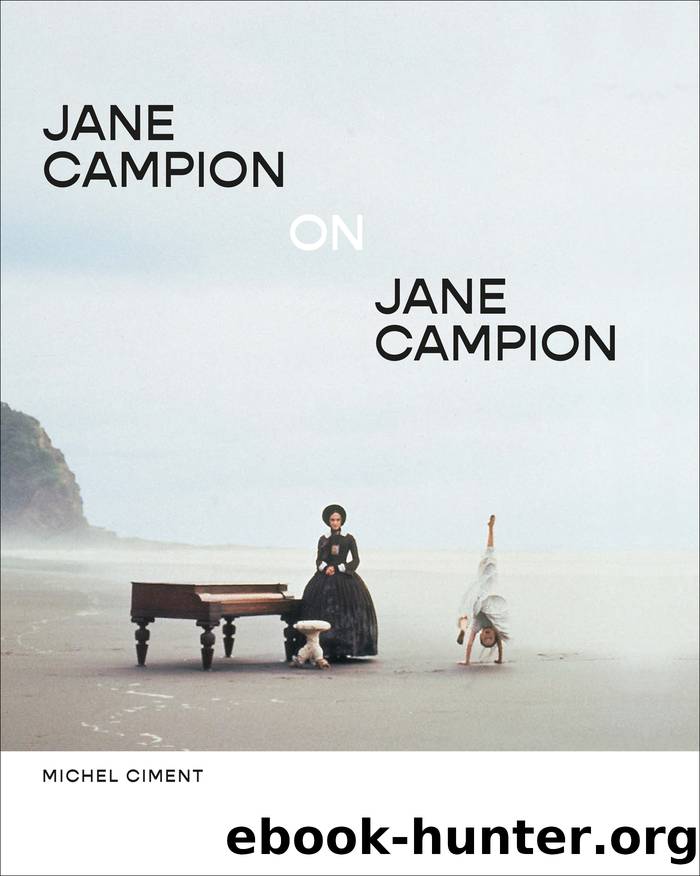Jane Campion on Jane Campion by Michel Ciment

Author:Michel Ciment
Language: eng
Format: epub
Publisher: Abrams
Published: 2023-09-26T00:00:00+00:00
Frannie discovers her sister dead.
When Frannie meets Malloy, sheâs going through a period of depression and withdrawal.
Itâs your first film set in a big city, and youâve managed to capture its atmosphere, thanks, in particular, to Dion Beebeâs very mobile camera.
Laurie Parker and I spent a week talking with Dion Beebe and the production designer, David Brisbin. We had numerous films on video at our disposition, and David suggested the idea of using a wide range of colours to make the half-darkness, using warm colours rather than limiting ourselves to green, blue, and dark tones, as the story was dark enough in itself. Dion and I planned how the camera could contribute to the story and what we could do within the constraints of the budget, which allowed us nine weeks of shooting. We talked about the direction of the actors: I didnât want to be too prescriptive, but, on the contrary, relaxed: I needed to allow them some freedom so that would be very present on screen, like in Coppolaâs The Godfather.
We also recalled the opening sequence of Holy Smoke and decided that it would be good to film the whole of In the Cut in that register, allowing the actors to perform the scenes and only afterwards looking to structure what weâd filmed. This was our modus operandi: the actors, particularly Meg, would develop their way of acting a scene and their movements, and the cameraâwith a few necessary adjustments on their partâwould adapt to their ideas. Dion is very sensitive visually; intelligent and deep. Most of the motifs in the opening sequence come from him. We understand each other perfectly, and this way of filmingâwhere we basically trusted our instinctsâwas invigorating because nothing was really established before shooting, even though Dion had made storyboards, which he later abandoned! I should say, however, that we did make use of them for some sequencesâfor example, the intimate scenes, where the choice of angle was important.
At the beginning, the scene where she descends the stairs in the bar is like diving into her unconscious.
Thatâs exactly what I wanted to suggest. In the story, this scene represents a sort of mythical underworld, which is also the start of a voyage. She enters into the world of the detective film, like Alice in Wonderland, but a darker version! Itâs the story of renewal, and at the same time a love story, which wasnât exactly the theme of the novel, which was more focused on sexual encounters.
The last shot, of the door closing on the coupleâs intimacy, confirms that itâs a love story.
Susanna defined her novel for me in this way, but not without a touch of irony in her voice. I told her that I was taking her at her word and that it was like that that I would shoot her story. It wasnât so easyâthe story is anti-romanticâbut ultimately, thatâs what itâs about.
Although there are elements of suspense and characteristics of the thriller with the four suspectsâthe inspector, his colleague,
Download
This site does not store any files on its server. We only index and link to content provided by other sites. Please contact the content providers to delete copyright contents if any and email us, we'll remove relevant links or contents immediately.
| Direction & Production | Reference |
The Kite Runner by Khaled Hosseini(5133)
Gerald's Game by Stephen King(4607)
Dialogue by Robert McKee(4353)
The Perils of Being Moderately Famous by Soha Ali Khan(4194)
The 101 Dalmatians by Dodie Smith(3481)
Story: Substance, Structure, Style and the Principles of Screenwriting by Robert McKee(3420)
The Pixar Touch by David A. Price(3389)
Confessions of a Video Vixen by Karrine Steffans(3273)
How Music Works by David Byrne(3233)
Harry Potter 4 - Harry Potter and The Goblet of Fire by J.K.Rowling(3031)
Fantastic Beasts: The Crimes of Grindelwald by J. K. Rowling(3029)
Slugfest by Reed Tucker(2972)
The Mental Game of Writing: How to Overcome Obstacles, Stay Creative and Productive, and Free Your Mind for Success by James Scott Bell(2876)
4 - Harry Potter and the Goblet of Fire by J.K. Rowling(2683)
Screenplay: The Foundations of Screenwriting by Syd Field(2601)
The Complete H. P. Lovecraft Reader by H.P. Lovecraft(2529)
Scandals of Classic Hollywood: Sex, Deviance, and Drama from the Golden Age of American Cinema by Anne Helen Petersen(2491)
Wildflower by Drew Barrymore(2466)
Robin by Dave Itzkoff(2411)
